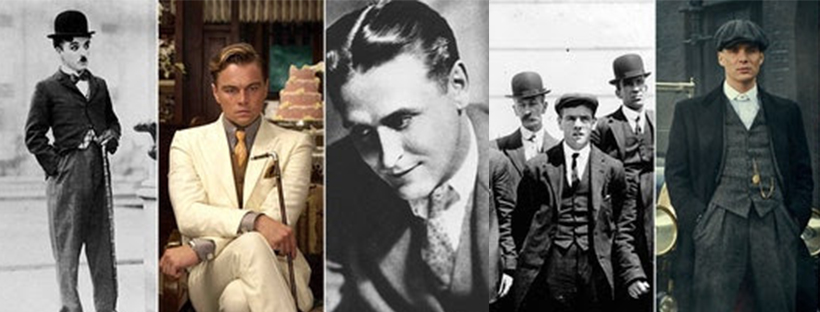
From Ancient Roots to 19th Century: The Evolution of the Suit
When thinking of men’s traditional and formal clothing, a suit is the only attire that comes to mind. There is no doubt about that, though they have been in practice for centuries, what men wear today—the modern suits are definitely the epitome of sartorial standards. However, how they evolved and transformed from ancient clothing to today’s timeless fashion is an interesting timeline of history to know.
An introduction to primitive clothing
Nearly twenty thousand years ago, ancient humans made a cloth-like covering out of animal skin to cover and protect their bodies from rain and sun. Evidence from Egyptians proves that these coverings (commonly called the outer tunics or cloaks) went up to the knees and were fastened with the help of a hose (belt).
This ancient clothing evolved as the stone age progressed. Humans then used bone-made needles and piercing tools to make pieces of clothing. Vines from plants or strings from leather were used to stitch these pieces together to craft a proper cloth.
The 11th- to 13th-centuries
In Western Europe, men and women began pleating the fabrics to make skirts called bliauts. However, these early civilizations didn’t pave the way for much advancement in clothing. Then came the Renaissance era—a timepoint of notable disruption to human clothing and the inception of suit-like garments.
The 14th- to 17th-centuries
The Italian tailors in these centuries transformed the bliauts into doublets that resemble slim-fit suit jackets. These doublets were used with hose and breeches (the trousers).
Notably, this was the period in which the term “suit” was coined from the French words “suivre,” meaning follow, and “suite,” meaning ensemble. The French tailors named it to mean that a jacket follows a breech or vice versa and together these sets of garments form a suite.
The French Revolution in the 1660s of the 17th century
Influenced by the French Revolution, King Charles II commanded all men in the royal court to wear suits—an ensemble of a long coat (blazer), knee breeches (trousers), cravat (necktie), petticoat (waistcoat), hat, and a wig.
The 18th- and 19th-centuries
It was in the 18th century that men’s fashion was defined as three-piece clothing consisting of a coat, waistcoat, and trousers.
Though this three-piece clothing itself was obtained by reducing the elements of what King Charles II decreed, Beau Brummell in the early 19th century further reduced the King Charles suit style. For example, heavily embroidered fabrics were replaced with minimally designed fabrics. The close-fit stockings or breeches were replaced with simple trousers.
Then came the Victorian era and the frock coats, after which the morning and lounge jackets were crafted. Later, there were back-and-forth changes in single and double-breasted suit usage and little evolutions with slim-fit and baggy suits. Over decades, these new versions of less ornamental suit styles were considered an inspiration and reference to modern-day tailors and designers of the late 19th and early 20th centuries. The rest is history…
If you’re curious to know the detailed evolutionary changes of suits in the 20th century, stay tuned with us!
Recent Posts

